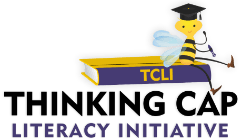Have you ever heard of visual processing disorders? Despite having perfect eyesight, some learners struggle to make sense of the visual information they receive. This can impact their ability to learn and perform well in school. In this blog post, we’ll explore what visual processing disorders are, how they can affect learners, and what educators can do to support students with these challenges. Whether you’re a teacher, parent, or student, this post will provide valuable insights and tips for navigating visual processing disorders in the classroom and beyond.
When the brain has problems making sense of the visual input it receives, visual processing disorders develop. They differ from visual impairment in that there is no blindness or problem with how the eyes operate, and therefore cannot be remedied using glasses. Even with perfect vision and a perfect score on a sight test, a learner may nevertheless struggle to tell apart two objects or understand the symbols on a page. A Visual Processing Disorder is different from Dyslexia, although they might occur together in an individual.
There are many ways that difficulties might present themselves, and no two kids will experience the same difficulties. Some may have difficulty determining distances, while others may struggle to evaluate color, size, and orientation.
Given that much of the information kids learn in a regular classroom is absorbed through the eyes, visual impairments frequently have an impact on learning. Learners may struggle to focus and get quickly distracted by too much input in their range of vision. They may struggle in physical education, art, music, and athletics, and their reading and writing skills may suffer as well.
Some of the different types of visual processing disorders
Visual Spatial Difficulty
Here,the learner has difficulty with directions, such as reversing, and misunderstanding letters and numbers with similar shapes, having trouble processing the placement of objects and symbols in relation to one another. Both reading and math may be impacted by this.
Visual Discrimination Difficulty
Learners with this type of difficulty struggle using their sense of sight for noticing and comparing features and details of different items. They struggle to distinguish one item from another.
Visual agnosia
A learner who struggles with visual discrimination may also have trouble recognizing and naming objects and symbols consistently, although objects can be identified using other sense organs. This can be problematic in maths and reading lessons.
Visual Closure Issues
If a child is unable to see 100% of an object the brain typically fills in the missing bits using prior knowledge. However, for learners with this type of visual processing difficulty, the object may remain unidentifiable and cause comprehension issues and confusion.
Accommodating Learners with Visual processing disorders in the classroom.
Repetition of information in several formats. Instructions for a task or other important information should always be provided in multiple formats. The instructions might be read aloud by the teacher, followed by a demonstration and a handout. This is an excellent practice in general since it will guarantee that students with various learning preferences and styles have an equal chance to get ready for the session.
For writing, provide plenty of thickly dotted or lined paper. When writing by hand is necessary, this can make it simpler
Create exercises that call for response from several senses. When it is practical, add audio feedback and take into account both the method of task/assignment delivery and that of response delivery.
**Encourage reading while utilizing an object to direct your gaze. Use a finger, a ruler, or any other item to help direct the gaze so that learners can maintain their reading position and prevent becoming lost.
**Practice reading large print books. Larger print books may make it easier to assimilate letters, which may improve reading comprehension.

